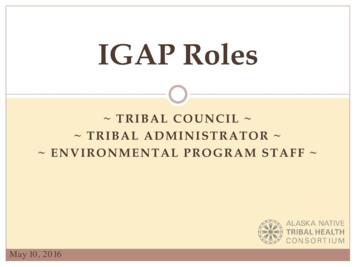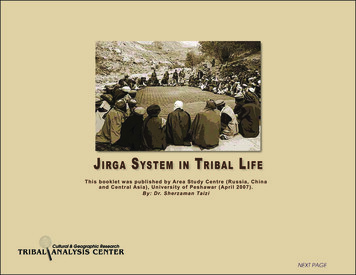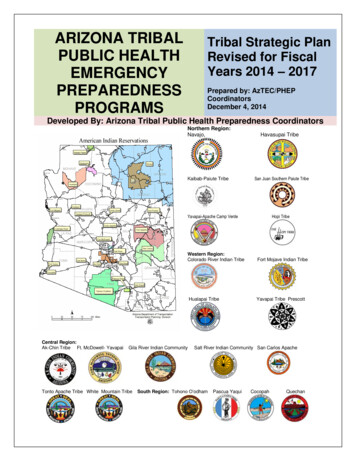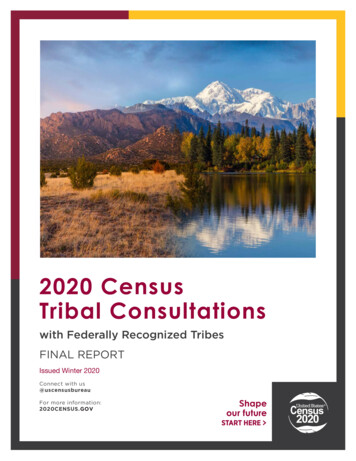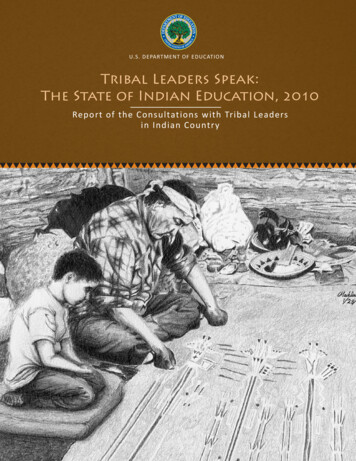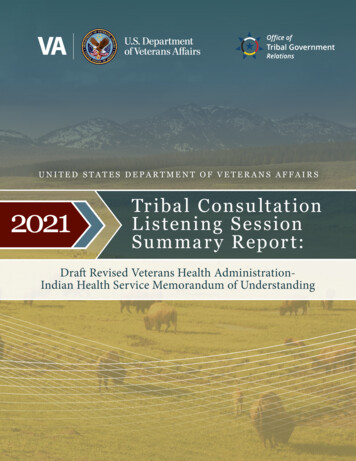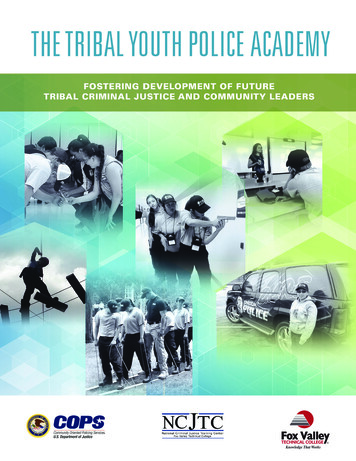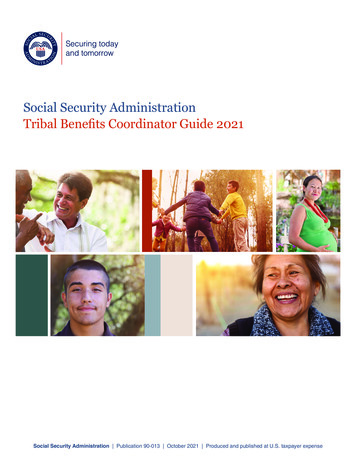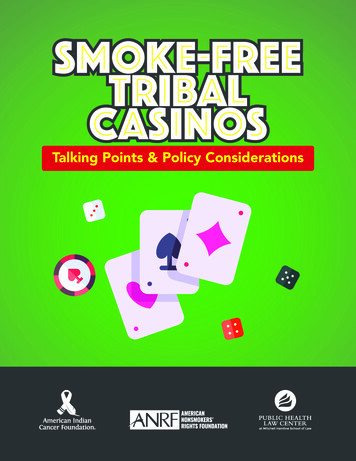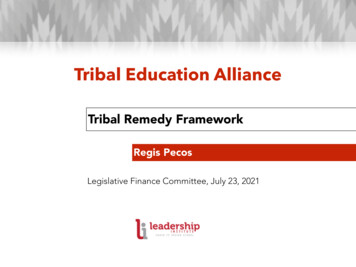
Transcription
Tribal Education AllianceTribal Remedy FrameworkRegis PecosLegislative Finance Committee, July 23, 2021
What is the Tribal Remedy Framework (TRF)?๏ A comprehensive plan for meeting the educational needs ofNative students.๏ Created by tribal leaders, community members and Indigenouseducation experts.๏ Endorsed by New Mexico’s 23 Nations, Tribes and Pueblos.๏ Requests permanent state investments in Indigenous educationdirected by Tribes and Indigenous education experts themselves.
The Tribal Remedy Framework3 strategic solutions to our education crisis:Shared responsibility & increased tribal control over theschooling of Native childrenCommunity-based education centered in tribal communitiesA balanced, culturally and linguistically relevant education thatbuilds on the strengths of children and their communities
The Tribal Remedy Framework:Systematic, sequential, self-determined
Indian Education in New Mexico:FACTS or MYTHS?
The Tribal Remedy Framework receivedsignificant funding this year ( 31M according toan LFC report).True or False?
FalseThe TRF received 15.7M, or 11% of the TRF bills’ requests.Contrary to legislative intent, program funds are being disbursed as one-offPED grants.Suppl. budget bill (SB 377)ReceivedTRF bills 2021RequestedTribal Education Departments 4,500,000HB 84Tribal Libraries 4,500,000Funding formulachangeHB 85 22,700,000Native language programs 1,615,700HB 87 26,209,030Tribal broadband (SF IndianSchool: Middle Rio Grande)Rep. Lente discretionaryfundsTribal studyRemedy Framework 5,000,000Funding Received 100,000 15,715,700Subtotal: programsHB 86 (capital)Total Funding Request 48,909,030 94,782,942 143,691,972
The State has increased funding for schools thatserve Native students. This will directly benefitNative students and satisfy the Yazzie/Martinezcourt ruling.True or False?
FalseThere is no evidence that dollars received byschool districts reach Native students and meettheir needs.The TRF requests that Native students be includedas a factor in the SEG to ensure that they directlybenefit from funding, as required by the court.
The legislature approved the Family Income Index,which provides 30M additional funds for lowincome schools. Because many Native studentsattend low-income schools, this will help meetNative students’ needs.True or False?
FalseNative-serving schools are not experts in meetingNative students’ needs.The TRF requests that recurring funding beallocated directly to Tribes for collaborating withschools and supplementing their programming.
The legislature finally passed an Impact Aid fix,allowing Native-serving districts to keep theirfederal funding.Those federal dollars will take care of the TRF’sdemands and the Yazzie/Martinez mandates.True or False?
FalseThe federal ruling on Impact Aid imposes separate anddistinct obligations on the State that cannot beconflated with Yazzie/Martinez mandates. Federaldollars cannot be used for funding state obligations.The State must fulfill each and all of its fundingobligations and stop shortchanging Native children.
The Indian Education Act & Fund is a good vehiclefor funding Indian Education in our state.True or False?
FalseThe Indian Education Fund awards only small, oneoff grants (a total of 5.3M this year). Half of thismoney goes to school districts, not to tribaleducation.The TRF seeks permanent, recurring funding forNative students, Native languages and tribalcommunity-based education.
The legislature has continued to make largeinvestments in extended learning. This will helpNative students catch up.True or False?
FalseThere is no evidence that Native students benefitfrom school-based extended learning time.The TRF requests funding for tribal communitybased after-school and summer school programs.
When the PED awards a grant to a Tribe, it is onlyfair that it expects the Tribe to meet stringentreporting requirements and achieve improvedstudent outcomes.True or False?
FalseA 80k one-year grant that arrives late and revertsback after a few months cannot be used to achievemeaningful outcomes.The PED’s grant application, management andreporting requirements are draining tribal capacityrather than building it.
The PED is well-positioned to provide technicalassistance to Native-serving schools and to createIndigenous curricula and materials.True or False?
FalseNeither the PED nor individual contractors canoffer the coherent, consistent, sequential approachneeded to guide Indigenous education.The TRF seeks to replace the PED’s “shotgun”approach (LFC 2006 report) with Indigenouscurriculum development and technical assistancecenters, staffed and directed by Native faculty.
Because everyone at the PED is doing their verybest, those good intentions will bear fruit andracial equity will become a reality in our state.True or False?
FalseIt takes more than good intentions to dismantleinstitutional racism.An important step would be listening to triballeaders, advocates and community members andaccepting their recommendations.
Check out our Pathways to Education Sovereigntyreport and other ework/index.htmlContact us at the Leadership Institute:505-989-6303
Tribal Education Departments 4,500,000 Tribal Libraries 4,500,000 Native language programs 1,615,700 Tribal broadband (SF Indian School: Middle Rio Grande) 5,000,000 Rep. Lente discretionary funds study 100,000 Tribal Remedy Framework Funding Received 15,715,700 False The TRF received 15.7M, or 11% of the TRF bills' requests.
